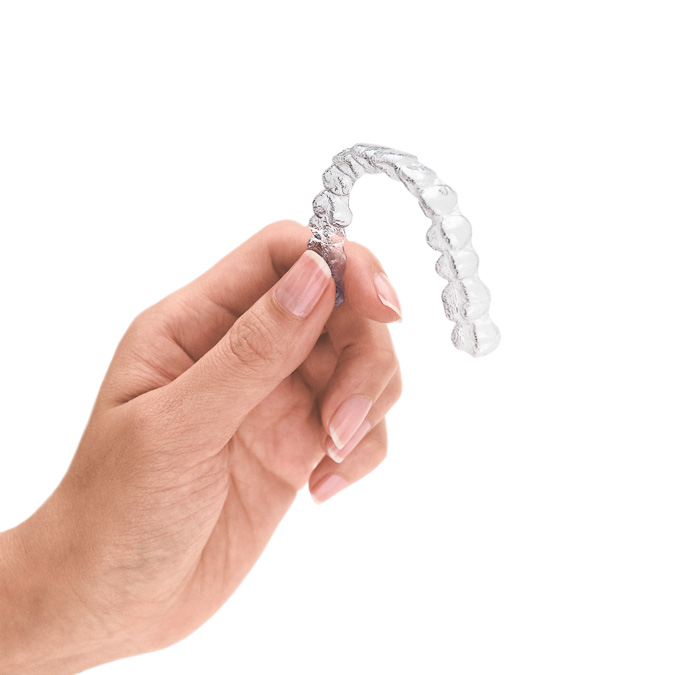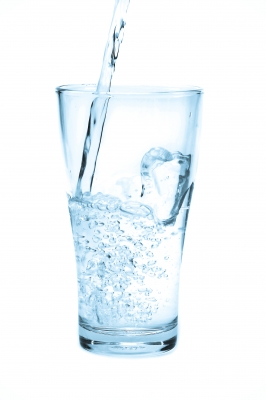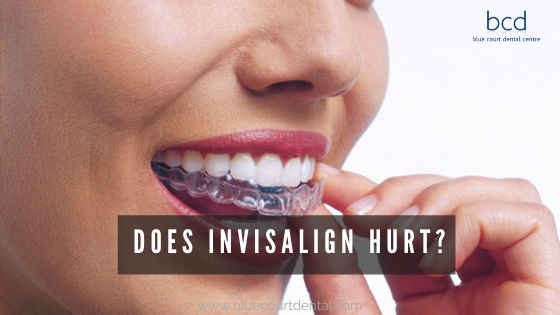As more and more people are prescribed Invisalign to straighten teeth invisibly, inevitably more people turn to the Internet to look for answers to their questions, in this blog post we are going to tackle the popular question of does Invisalign hurt?
Before we begin, let’s take a quick look at what the Invisalign treatment entails.
Orthodontic treatments utilise the principle that if you put a continuous gentle pressure on teeth then they will move. Studies have shown that the key factor is to have gentle continuous pressure, rather than short bursts of lots of pressure, this same principle works for traditional braces also. For this reason orthodontic treatments often take up to 2 years to achieve the desired result.
Each orthodontic system puts pressure on the teeth in a different way, some use removable appliances with springs and wires, others use brackets which are permanently bonded to your teeth and Invisalign uses clear aligners. These clear aligners fit over your teeth and put pressure on them to move them in the desired direction. You replace the aligners once every 2 weeks, this is how Invisalign achieves the continuous pressure on your teeth.
So where does the pain come from?
Pain can come from a couple of causes:
- the aligners themselves causing irritation
- the movement of the teeth causing pain and/or sensitivity
Sharp edges on Invisalign
 Very rarely the Invisalign aligners may have sharp or rough edges which are initially not noticed by Align Technologies when they send the Invisalign trays back to your dentist. If you find that the trays have sharp edges DO NOT try to adjust yourself. The material can warp if it is heated excessively and this warping will affect your trays ability to align your teeth. If you notice any sharp edges then tell your Invisalign dentist who can then book you in for an appointment to have the trays adjusted.
Very rarely the Invisalign aligners may have sharp or rough edges which are initially not noticed by Align Technologies when they send the Invisalign trays back to your dentist. If you find that the trays have sharp edges DO NOT try to adjust yourself. The material can warp if it is heated excessively and this warping will affect your trays ability to align your teeth. If you notice any sharp edges then tell your Invisalign dentist who can then book you in for an appointment to have the trays adjusted.
Invisalign hurts to take off
Sometimes you may find that a new set of aligners is a little difficult to remove initially and causes pain for the first week. This is because it is an active appliance and is actively pushing on your teeth, and therefore might be quite tight to remove.
To remove the aligner we don’t recommend pulling one side excessively and then the other, this can cause the aligner to flex which can result in a tear or fracture down the middle of the aligner. Instead, we recommend loosening one side very slightly, then loosening the other and then finally pulling on both sides at the same time to remove the aligner in one go.
If you’re still having trouble removing the aligner and it is causing you pain then let your dentist know as they may be able to help with more details and personalised instructions on removing the appliance.
Invisalign pain in one tooth
It might seem odd to experience pain in a single tooth but if an aligner is working on single tooth movements then this may be the reason why. Your whole Invisalign treatment will be planned from start to finish, at the beginning you may find that one tooth is being moved and/or rotated. Further aligners may then begin to move other teeth. If you have Short term pain in a single tooth don’t worry, this is probably part of the plan to move that single tooth before the others. Please do tell your Invisalign dentist if the pain persists.
Toothache with Invisalign
Because there is continuous pressure being put on your tooth you may find that you occasionally have toothache. This can usually be relieved with over-the-counter pain relief and should only last for a few days. Please do not be tempted to take your aligner out too often, you should be wearing your aligner for at least 22 hours a day in order to ensure that your Invisalign treatment stays on course. If you take the aligner out, you may find that the treatment takes longer than prescribed and may end up costing more in the long run due to an increased number of visits to the dentist.
Invisalign drinking with a straw
 For good oral hygiene it is recommended that you only drink water whilst wearing your Invisalign braces. Occasionally people recommend drinking other drinks through a straw, whilst this is better than drinking them from the glass it can still leave sugar covering your teeth as it washes around the aligner. This sugar then forms the food for the bacteria which excrete acid as they digest it, this acid can then lead to tooth decay.
For good oral hygiene it is recommended that you only drink water whilst wearing your Invisalign braces. Occasionally people recommend drinking other drinks through a straw, whilst this is better than drinking them from the glass it can still leave sugar covering your teeth as it washes around the aligner. This sugar then forms the food for the bacteria which excrete acid as they digest it, this acid can then lead to tooth decay.
The recommendation therefore is only drink water whilst wearing aligners and taken out to drink anything else, this includes drinking alcohol with Invisalign, particularly as alcohol often has a higher sugar content.
Do not drink any hot drinks whilst wearing your aligners as this can warp them meaning you have to have new trays made, this could be quite an expensive exercise!
Invisalign pain relief
If you are experiencing mild tooth ache with Invisalign then we recommend taking over-the-counter painkillers such as paracetamol. Invisalign pain should last longer than a few days each time you switch to a new aligner. If you have severe pain or the aligner seems to be rough then please inform your Invisalign dentist who can then make modifications to either the treatment plan or the aligner itself.
Dr Nishan Dixit
Latest posts by Dr Nishan Dixit (see all)
- Dr Dixit is the new President of British Academy of Cosmetic Dentistry - 28 May 2020
- Does Invisalign hurt? - 9 March 2020
- How Long Does Invisalign Take? - 27 February 2020


